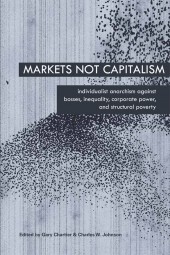In a 2019 study for Center for a Stateless Society (We Are All Degrowthers. We Are All Ecomodernists), I argued that the debate for and against degrowth was nearly incoherent because neither side clearly defined “degrowth” at all, let alone stuck to any consistent definition. If Paul Crider’s article “Degrowth: Neither Left Nor Right, But Backward” (Liberal Currents, Dec. 12, 2022) is any indication, this is as much a problem as ever. To Crider’s credit, his venture at critiquing degrowth is in much better faith than that of Leigh Phillips (whose work I examined in the C4SS study linked above), and he is not guilty of the kind of hate reads Phillips applied to degrowth source materials (by way of background, Crider is a self-described liberal and Phillips is a left-accelerationist).
Crider gets off to a promising start.
The word [degrowth] itself is shocking. For anyone accustomed to the assumptions of positive economic growth in public policy and the fear and hardship associated with economic contractions — recessions — degrowth evokes self-destructive policy, if not a return to primitivism.
Yet degrowth deserves a hearing. I hope to show that degrowth is fatally flawed, but its many currents are often misunderstood, conflated, or misrepresented. We should acknowledge what degrowth gets right: gross domestic product (GDP) is a problematic economic indicator; the pursuit of economic growth as a primary policy objective isn’t self-evidently justified in liberal or other terms, despite its near universal presumption; and the pursuit of economic growth has trade-offs and can be taken to absurd extremes.
His analysis begins to go off the rails, first as a result of problems with his source material, and then of his own lack of conceptual clarity combined with his unjustified inferences from the source material. To start with the first:
It’s worth checking in to see what degrowth’s exponents actually say for themselves. For much of the essay that follows I found The Future Is Degrowth: a Guide to a World Beyond Capitalism, by Matthias Schmelzer, Aaron Vansintjan, and Andrea Vetter to be a clear and engaging resource on the various currents within the degrowth movement. Early on they reference a survey especially useful for present purposes.
He quotes this passage from the book:
The largest empirical survey of degrowth proponents, a survey at the 2014 Leipzig conference in which one of us was involved, found that respondents held several positions in common: they largely agreed that economic growth without destruction of nature is an illusion and that therefore industrialized countries need to equitably downscale production and consumption; they also mostly agreed that consequently the rich will have to do without some amenities to which they have become accustomed, and that the transformation to a degrowth society must come from below, will be peaceful, and will require overcoming capitalism and patriarchy. This basic consensus across many different perspectives among conference attendees highlights that degrowth proponents are fundamentally critical of growth, capitalism, and industrialism, want to overcome other forms of domination, and advocate a radical restructuring of the economy in industrialized countries, requiring the selective downscaling of certain industries and production. This clearly distinguishes degrowth from many other political positions — not only from conservative currents (e.g., preserving the status quo, green fascism, or green growth) but also from leftist productivist positions such as most Green New Deals or visions of post-capitalism, which are less precise on the need to transform capitalism, dynamics of growth, global justice, and excess consumption.
The problem with this quote — leaving aside that it was a survey of attendees at a conference in Leipzig, its generalizations therefore applying only to the German degrowth movement — is that, in Crider’s own words, degrowth is a movement of “various currents,” and the various positions enumerated in the clauses of the passages he quotes are not necessarily all held by the same people. While a majority of degrowthers polled — the passage doesn’t specify the size of the majorities — might agree with each of the statements, they are not necessarily the same majorities. Further, many of the terms themselves — “industrialism” in particular — are notoriously squishy, and may mean different things to the different people surveyed.
The authors of The Future is Degrowth themselves, in the passage quoted, cite two sources for their generalizations about the survey:
- Matthias Schmelzer and Dennis Eversberg, “Beyond Growth, Capitalism, and Industrialism? Consensus, Divisions and Currents within the Emerging Movement for Sustainable Degrowth,” Interface: A Journal for and about Social Movements 9, no. 1 (2017): 327–56; and
- Dennis Eversberg and Matthias Schmelzer, “The Degrowth Spectrum: Convergence and Divergence within a Diverse and Conflictual Alliance,” Environmental Values 27, no. 3 (2018): 245–67.
Only the latter article was available on Sci-Hub.
Looking at the actual questions asked in the survey, none of them specifically defines either “growth” or “degrowth,” or asks for the respondents’ agreement or disagreement with any definition. Some questions refer vaguely to reductions in “production and consumption” and “shrinkage,” with no clear statement of what is meant by any of them. What’s more, the word “industrialism” itself doesn’t even appear — casting serious doubt on the characterization of the survey results by Schmelzer et al.
The most damning response, from the standpoint of someone seeking to debunk associations of degrowth with austerity, was probably to the statement “In the future we will have to abstain from amenities that we have become used to,” with which 86% agreed. But that statement itself is by no means unambiguous. Many of the amenities we would have to forgo, in a more efficient society, are actually things we are forced to consume in order to compensate for previous amenities of which we have been deprived. A good example is car culture, in which car ownership is mandated by the previous destruction of compact, mixed-use cities with walkable/bikeable layouts and convenient, high capacity public transportation. In the case of other amenities, where their production is currently profitable at artificially high levels or they are artificially cheap because of subsidies, reduced consumption might result automatically from full internalization of cost in the market price.
On the other hand, respondents agreed almost 2-1 with the statement “The high level of technological development in today’s society is not a hindrance, but in fact an important precondition for a post-growth society.” They also disagreed by more than 2-1 that long-distance flights purely for pleasure would have to be forbidden. A majority disagreed that humans should return to our “natural place in the world,” and only the slimmest of majorities agreed that “To live more sustainably, we should remember and revive the lifestyles of previous generations.”
So the generalization that degrowthers are in any way technophobic (as suggested by degrowthers’ alleged opposition to “leftist productivism” — a position itself arguably reflecting a cargo cult view of technology) is not reflected in the actual survey data.
From here on out, the problem lies primarily with Crider’s own lack of conceptual clarity.
He continues, returning to his earlier promising start, by pointing out some of the problems with GDP as a metric.
To a first approximation economic growth is captured by the familiar GDP, or gross domestic product, which in principle is all the output of the economy, all the expenditure, or all the incomes. As the economic indicator toward which politicians focus public policy, degrowth addresses the shortcomings of GDP and calls for its abolition as an indicator. But while GDP provides a convenient target, degrowth ultimately opposes economic growth even when growth is more comprehensively conceived.
GDP famously fails to account for environmental degradation or even the value of natural resource wealth. Obliterating a landscape and its associated ecology by mining for coal (and thus increasing greenhouse gas emissions) figures not just as a net positive in GDP but as entirely positive.
There are further absurdities in domestic and reproductive labor. Work within the home, whether housekeeping or caring for children or elders goes uncounted in GDP, though such activities do count toward GDP when money changes hands. . . .
Health and well-being figure into GDP only when they involve exchange, as in buying medicine, receiving hospital care, or visiting a therapist. The proliferation of unhealthy foods and activities increase GDP once when they are purchased and again (and again) when medical or therapeutic care is bought to alleviate the resulting ills. . . .
In fact, in the following two paragraphs, Crider comes close to giving away the entire ballgame.
GDP also says nothing about the variety of options or the invention of new kinds of goods and services. A shoe is just a shoe to GDP, but there are real quality of life benefits to being able to choose not just between different shoemakers but between designer stilettos, high-tech running shoes, and steel-toe construction boots. Before the digital revolution — made possible by economic growth — there was nothing analogous to computing power. It is a whole new species.
GDP is often a convenient enough metric for both defenders and critics of economic growth, but degrowth is more fundamentally concerned with growth as material throughput, or “social metabolism,” the real material and energy intercourse human beings have with nature. I will refer to “material economic growth” throughout when I’m talking about this more comprehensive phenomenon.
The last paragraph fairly encapsulates a proper understanding of growth, and what is problematic about it, from a degrowth standpoint. GDP is simply a metric of the sum total of exchange value, which itself for all intents and purposes is the sum of input costs plus economic rents. Any reduction in the resource inputs required to produce a given output of use-value, unless economic rents from artificial scarcities or artificial property rights prevent the savings in material input costs from being reflected in the final price of goods and services, will reduce GDP by an equivalent amount. The central goal of degrowth is a reduction in material inputs; regarding the production of use-value, it is neutral. It follows that, depending on the changing efficiencies of production and design, a reduction in input consumption can reduce GDP without any necessary effect on actual standard of living.
The penultimate paragraph, taken in this context, actually develops the principle stated in the last one (albeit with some confusion added to the mix). GDP, indeed, “says nothing about the variety of options or the invention of new kinds of goods and services.” The technical quality of goods and services can increase with no effect on nominal GDP.
Despite acknowledging this, Crider characterizes the digital revolution and increased computing power as “made possible by economic growth.” In so doing, he makes essentially the same mistake as Leigh Phillips and other degrowth critics, in treating “growth” as a god-term more or less synonymous with “progress” — and not, as it should be understood, a simple increase in aggregate exchange value determined primarily by material footprint rather than the quantity of use-value produced.
Crider nevertheless shifts back to treating “growth” as, if not synonymous with material footprint and resource consumption, at least a considerably overlapping concept.
Degrowth, liberal and otherwise, offers good reason to be suspicious of the normative “hegemony of growth.” We face an ecological catastrophe that can only be seriously met by sharply reducing our social metabolism. Material economic growth requires ever increasing imposition on the natural world. This is most acute with the fossil fuels on which global economic growth has depended since the onset of the Industrial Revolution. Yet the possibilities for decoupling energy production — and thus the economy generally — from greenhouse gas-emitting fossil fuels have turned markedly more hopeful in the last decade, as renewable energy sources are primed to overtake coal by 2025 and as solar power costs continue to plummet. Plans to achieve net-zero carbon emissions are ambitious but no longer pie-in-the-sky, and the realization of big clean energy infrastructure moves are beginning to be demonstrated with President Biden’s Inflation Reduction Act, to take one promising recent example.
Note that “reducing our social metabolism,” and decoupling resource inputs from the production of use-value, are serviceable descriptions of the actual degrowth agenda. Crider, notwithstanding, goes on to make the following leap, with no more basis in the previous discussion than Schmelzer et al’s generalizations had in the responses to their own survey:
To the extent that degrowth strives to sever the association of economic growth from notions like welfare, development, and flourishing, it provides a helpful corrective. But the claim is not only that growth isn’t the whole story, but that it is either… irrelevant or (from harder left perspectives) positively harmful. For all of the growth-agnostic qualifiers from liberal degrowth, the main thrust of the many currents in degrowth is anti-capitalist, anti-industrial, anti-abundance, and ultimately anti-liberal….
On the degrowth view, growth subjects — ordinary people living ordinary lives in liberal democracies — must be taught to narrow their sights and dim their dreams. Why do you want to try new things, ideas, foods, sports, etc? Why do you want to see the world? Why do you want to consume so much media, read so many books, eat exotic foods, explore expensive hobbies?…
The sheer messiness of this is only compounded by the fact that the first sentence in the passage appears to contradict all the rest.
Crider starts out by acknowledging the conceptual advantage of decoupling “growth,” as such, from material welfare — and then immediately proceeds to equate degrowth to austerity, imposed through central planning and social control. His statement of this last charge is both explicit and strident.
. . . [P]ursued to its logical ends degrowth must turn to central planning and social control. Under degrowth the natural propensity to pursue our wants by truck, barter, and trade is held in suspicion or even contempt. Seeking profit, investing, consuming, and even saving are all pursued to better our own conditions and possibilities or those of our families, friends, or communities. Because the urge to improve our lot in life is so primal and so strong, these activities must be sharply guided or outright controlled.
There is no conceivable, stable scenario where the great preponderance of individuals, business interests, and governments choose to reduce wealth and productive capacity — to become poorer — voluntarily. . . .
. . . A degrowth advocate could readily retort that human “freedom” is just the price that must be paid to avert ecological catastrophe. But even on its own terms degrowth is destined to fail to meet the basic needs it centralizes. Few economic or historical lessons have been harder learned than the inability of centrally planned economies to provide the basic needs or protect the basic rights of its subjects. Lest my charge of central planning be mistaken for red-baiting at the hint of an enlarged public sector, I’ll say now that mitigating climate change demands massive public spending, and a greatly expanded public sector providing “public options” for healthcare, child care, banking, transportation, and other necessities could provide a solid basis for all individuals to live productive and flourishing lives. This may or may not be socialism but it is not central planning. Central planning enters the picture when everyday consumption choices and entrepreneurial ventures are treated with suspicion, presumptively forbidden without special approval from “democratic” councils.
To back this up, he cites The Future is Degrowth:
To make [degrowth] possible, economic decisions must be seen as political problems. This means putting the economy in the hands of people and involving more and more people in key decisions – such as the producers in a factory, the neighbours of a farm, the users of a community-owned power plant, or the care recipients in retirement homes deciding what is produced, how to relate to the environment and other economic agents, which services are needed, and how work is organized.
He continues in the same vein:
The presumption of freedom — to do what we like, buy, sell, and trade what we like, and toil how we like — is replaced by the presumption of needing approval from authorities. This is the political economy of the homeowners association at the local level, and at the national (and international) level it is picking and choosing whole sectors of the economy that need to be purged for the “common good” of degrowth. For the industries that remain, political powers must choose what products and which producers are truly necessary and which must be cut as wasteful excess. . . .
It’s worth dwelling on what a shift to a command-and-control economy would look like in human terms. Degrowth may involve a universal job guarantee, but choice of work would radically diminish. Do you want to move to be with your family? Do you want to escape a lousy work environment? Do you want to study German literature or economics at college? These sorts of decisions may need approval from planners, especially as five-year degrowth plans begin missing their targets.
Having doubled and tripled down on his assertion that degrowth requires Stalinist levels of central planning, Crider returns to his sloppy equation of “growth” to “progress” and “innovation” — ignoring his own earlier concessions that both of those things can be decoupled from changes in GDP and from resource consumption (i.e., that they have nothing to do with “growth”):
This has been a negative case for economic growth. We should not pursue degrowth because to do so would cost too much in the coin of basic human freedoms. But material economic growth also directly expands human capabilities. Greater wealth, greater productive capacity, and the institutional machinery of innovation multiply the effective options individuals have to pursue their respective projects and ends. Growth makes freedom possible; freedom makes growth possible. They are inseparable.
It’s trivial to think of inventions that have radically improved human capabilities. A personal favorite is the birth control pill, which has perhaps done more to liberate women into public life and to undermine patriarchy than the entire edifice of feminist thought. But this required a base level of economic capabilities to achieve and to produce to scale. Hormone therapy for trans people might not have been developed had we started degrowth in J.S. Mill’s time. Covid would have hit differently without remote capabilities to continue work (which would be necessary to some extent even in a degrowth regime) and the readily deployed industrial capacity to churn out millions of doses of made-to-order mRNA vaccines. The Green Revolution enabled industrial agriculture to feed billions and genetic engineering promises to continue that tradition. Cutting edge technologies like CRISPR promise revolutionary health advances and as a kind of health platform technology it will likely roll out a whole new industry.
This is contradicted, by the way, by the German degrowthers’ own overwhelming agreement with the statement that contemporary technology is a help to degrowth.
Now he returns to decoupling technical progress from “growth,” in the sense of increasing GDP:
We do not and cannot know what technologies are just around the corner that could be just as important to us as birth control or mobile telephony. We can acknowledge that material economic growth has these attractive features without thereby committing ourselves to maximizing GDP at all costs.
But shortly afterward he’s back to equating degrowth, once again, with everything backward and primitive — in terms almost as egregious as Leigh Phillips’s “hair shirts” and “organic carrot pants.”
The good ideas in degrowth (buy-nothing groups, libraries, universal basic services, the whole gamut of social justice causes) are easily apprehended in normal growth-friendly terms. Degrowth adds only rotten ideas: central planning, suspicion and politicization of everyday economic and lifestyle choices, and a profound lowering of human aspirations, no longer to boldly build, explore, and better ourselves but to crouch and huddle in the familiar.
So ends Crider’s article. The problems with it fall into two general categories.
The first, of course, is conceptual incoherence. There’s really no need to belabor this, as we’ve already noted it in the process of recounting, above, his shifting characterizations of degrowth from one paragraph to another.
The other problem is his assumption, at no point justified, that degrowth requires “imposing limits” through “central planning,” rather than (say) eliminating all the existing ways in which the state actively promotes and subsidizes resource consumption and erects barriers to efficiency. Crider resorts to a framing that is shared by most liberal capital apologists: i.e., that everything leftists criticize about capitalism — e.g. inequality, exploitation, extractive profit models, unsustainable resource consumption, etc. — is a spontaneous outcome of the market which can only be changed through intervention and the imposition of constraints from outside.
But the truth is just the reverse. Capitalism and the nation-state are fraternal twins, with their common origins in the early modern period. And they have been in a symbiotic relationship since the beginning. All the defining features of capitalism — the expropriation and enclosure of land, the separation of the working majority from the means of subsistence, the mass-imposition of the wage system and the cash nexus, the transformation of land and labor (in Polanyi’s term) into “fictitious commodities” — required constitutive violence by the state. Capitalism also requires ongoing state violence, insofar as the great bulk of profit results from unearned economic rents on artificial property rights and artificial scarcities of one kind or another — absentee title to land, intellectual property, legal restriction of the credit function to the possessors of previously stockpiled wealth, etc. — and these same rents are the means by which accumulated wealth is enabled to grow exponentially upon itself.
Most relevant for our purposes is the way in which capitalism has, from the beginning, pursued a model of endless growth through the extensive addition of new, artificially cheap, resource inputs. One of the central functions of the capitalist state, starting with the expropriation of colonial resources and their enclosure by Western capital, has been to guarantee a supply of cheap raw materials. This has continued with the forced pursuit of export-oriented development based on the provision of raw materials to the West under colonialism, the subsequent imposition of export-oriented economic models on the Global South through multilateral institutions like the World Bank and IMF, and the role of the US and its subordinate allies in fighting wars for oil and overthrowing governments that depart from the neoliberal fold.
Likewise, domestically, the state facilitates extensive growth based on artificially cheap subsidized inputs, as James O’Connor noted long ago in The Fiscal Crisis of the State. Besides its wars for oil, and the primary role of the Navy in keeping sea lanes open for oil tankers at general taxpayer expense, the federal government created the civil aviation system almost entirely at public expense and took the lead in funding the Interstate Highway System. Without this — without a major portion of distribution costs being externalized on taxpayers — the extended supply chains of modern capitalism would have been impossible.
The state also actively facilitates the full utilization of excess industrial capacity through waste production, by such means as the military-industrial economy, massive subsidies to car culture and sprawl, and the ways in which the patent system facilitates planned obsolescence.
Contrary to Crider’s framing, the fastest way to achieve rapid degrowth in waste production and resource consumption would be to simply remove the subsidies to it. And ultimately, eliminating perverse incentives through predistribution — i.e., building them into the basic institutional structure and definition of property rights, and then letting market-clearing prices sort themselves out under the new property rules — would be far more efficient than central planning. I argued for a Hayekian market socialist system, based on predistribution through the design of property rules, in pp. 14-24 of my study Hayek’s Fatal Conceit (C4SS, 2020).
I raised both of these points with Crider, much more briefly (it all fit into a 300 character post) on Bluesky on April 4, which resulted in an interesting exchange (the link only works if you have a Bluesky account).
Crider replied that “degrowthers do talk about imposing limits. They talk about eliminating ‘overconsumption’ and ‘superfluous industries.’ The devil’s in the details there, and in who gets to decide.”
First, as I pointed out to Crider, “anticapitalists in general have a tendency to take capitalist framing at face value when they speak of things like ‘unfettered capitalism,’ and ignore the extent to which its profit model depends on enclosed commons, artificial scarcities, and other fetters or subsidies.”
But more importantly, the two phrases he put in quotes do not in any way, as such, imply a requirement for imposing outside restraints to eliminate overconsumption or superfluous industry. His inference that it could be done only through central planning is based entirely on his own unstated assumptions about the nature of existing capitalism. As we have already seen, it is the capitalist state which actively promotes waste and irrationality through its positive interventions, and the problem could arguably be solved by removing those interventions.
Crider, finally, charges that “degrowth involves an economics of suspicion — any new economic activity, from acquisition to invention, requires justification. I provide textual evidence for this economics of suspicion in the essay.”
Yes, we’ve examined the quality of his “textual evidence” at some length above. The only direct textual evidence he cites is a reference or two to critiquing “industrialism” and “leftist productivist positions” in the brief passage he quoted from The Future is Degrowth. Further, as we already saw, the use of such language by the authors of the book themselves to characterize degrowthers turned out to be almost entirely their own interpretation and unsubstantiated by the responses to the actual questions in their survey.
As for the assertion in The Future is Degrowth that “economic decisions must be seen as political problems,” that is a statement reflecting the views of the authors, with no indication provided that it reflects the general views of a movement. Further, characterizing economic decisions as “political problems” does not necessarily imply vesting control in the state; the decision as to whether to vest control in the state, and how much, is political. The requirement itself could be simply met through ex ante means like vesting enterprise ownership automatically in their and putting them under self-management, and putting natural resources under local commons management bodies of the sort Elinor Ostrom advocated, rather than by central planning. If anything, these would be far more rational allocations of property rights, with less perverse incentives, than prevail under the present system, and would be entirely compatible with the formation of market clearing-prices and the market allocation of goods.
Beyond these things, there is no textual evidence at all — just Crider’s dark surmises, based on his own assumptions about what means the end goals of degrowth would require.
As I argued in my C4SS paper, degrowthers and ecomodernist anti-degrowthers are both culpable in the travesty that passes for a debate over growth. Both are guilty of conceptual sloppiness, using the terms “growth” and “degrowth” in ambivalent senses, and nowhere clearly defining their terms or consistently adhering to any one definition. But it is possible to infer at least something in the way of a coherent definition that is implicit in the predominant rhetoric of the respective camps.
For degrowthers, the implicit definition of degrowth — despite the aforesaid sloppiness and inconsistency — is a reduction in total resource consumption and of GDP insofar as it is an aggregate measure of the value of resource inputs consumed, without regard to standard of living. For anti-degrowthers, “degrowth” is economic and technological stagnation, austerity — in Crider’s colorful phrase, “stopping the economic motor and shifting into reverse.”
For there to be any progress in this debate, the degrowthers need to become clear in their own minds as to what the logic of their own position entails, and then to set out that logic coherently. And the anti-degrowthers, in turn, need to address this actual position rather than strawmen. The goal, for both sides, should be to arrive at common ground on ways to decouple our standard of living from GDP and resource consumption, and to eliminate waste and irrationality from the production of our wants and needs.







